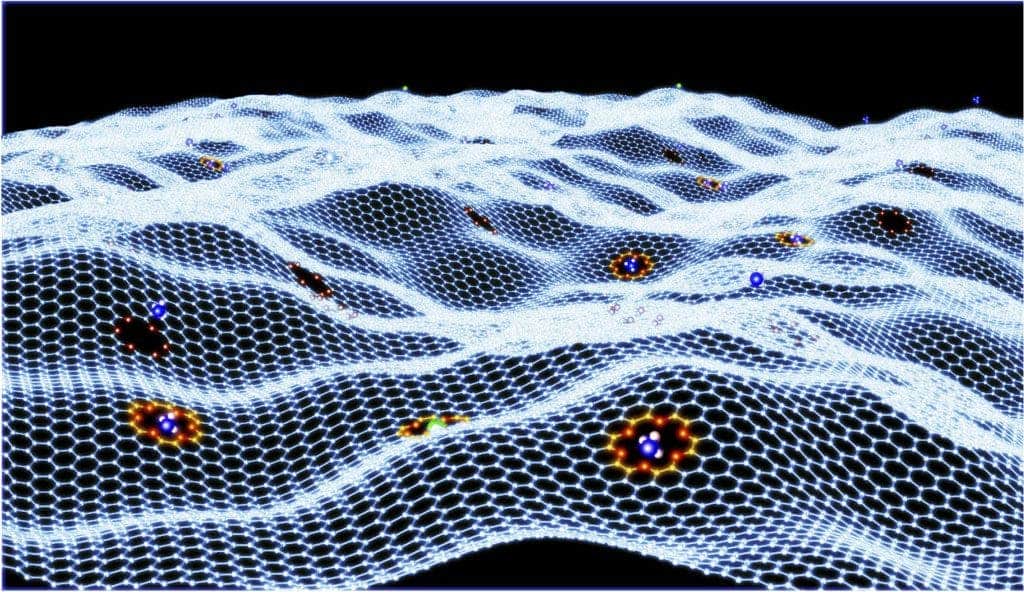A rather surprising study found that graphene’s imperfections can actually be used to improve fuel cell efficiency. Researchers from Northwestern University worked together with scientists of five other institutes to show that defective graphene actually works as the world’s thinnest proton channel—only one atom thick.

The applications of graphene seem virtually limitless – it seems like we’ve written countless articles detailing that. However, despite advancements, there still isn’t a cheap and effective method of actually producing it – or at least producing it flawlessly, that is. But perfection is really overrated, as this study has shown, and manufacturing flawed graphene is also rewarding.
Graphene is basically a continuous one atom thick sheet of carbon with some remarkable properties; but flawed graphene may be just as interesting – researchers found using a single imperfect layer and water, they can let protons, and only protons, to move from one side to the other. This system can lead not only to better fuel cells, but also brings hydrogen cars one step closer to becoming a reality.
“Imagine an electric car that charges in the same time it takes to fill a car with gas and better yet — imagine an electric car that uses hydrogen as fuel, not fossil fuels or ethanol, and not electricity from the power grid, to charge a battery. Our surprising discovery provides an electrochemical mechanism that could make these things possible one day,” said chemist Franz M. Geiger, who led the research in a statement.”
According to the team, single layer one-atom thick graphene could produce the world’s thinnest and most efficient photon channel.
“We found if you just dial the graphene back a little on perfection, you will get the membrane you want. Everyone always strives to make really pristine graphene, but our data show if you want to get protons through, you need less perfect graphene,” said Geiger, a professor of chemistry in the Weinberg College of Arts and Sciences.
Initially, they tried to achieve similar results with graphene, but they failed – because graphene was simply too perfect, and didn’t act as an efficient channel.
What happens is that defects from one side of graphene generate a chemical merry-go-round where protons are transferred to the other side. Still, researchers stress that this is just a proof of concept, and not something that will lead to improved fuel cells overnight.
“Our results will not make a fuel cell tomorrow, but it provides a mechanism for engineers to design a proton separation membrane that is far less complicated than what people had thought before,” Geiger said. “All you need is slightly imperfect single-layer graphene.”
Journal Reference: Jennifer L. Achtyl, Raymond R. Unocic, Lijun Xu, Yu Cai, Muralikrishna Raju, Weiwei Zhang, Robert L. Sacci, Ivan V. Vlassiouk, Pasquale F. Fulvio, Panchapakesan Ganesh, David J. Wesolowski, Sheng Dai, Adri C. T. van Duin, Matthew Neurock & Franz M. Geiger. Aqueous proton transfer across single-layer graphene. doi:10.1038/ncomms7539
Was this helpful?



